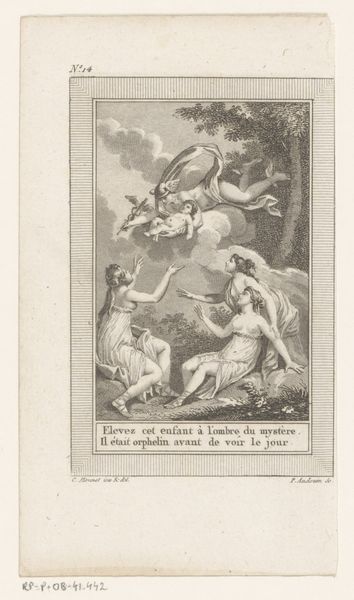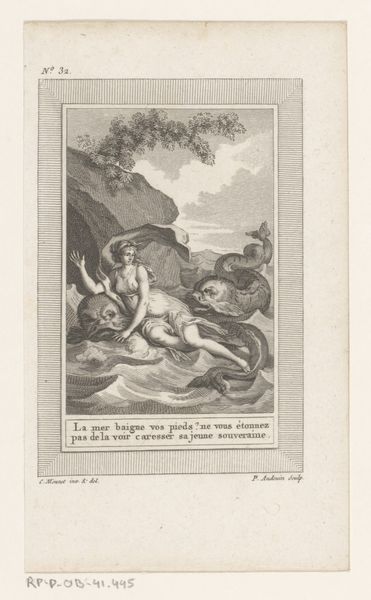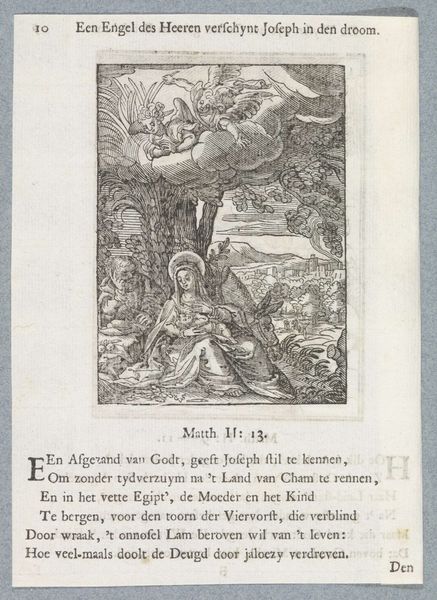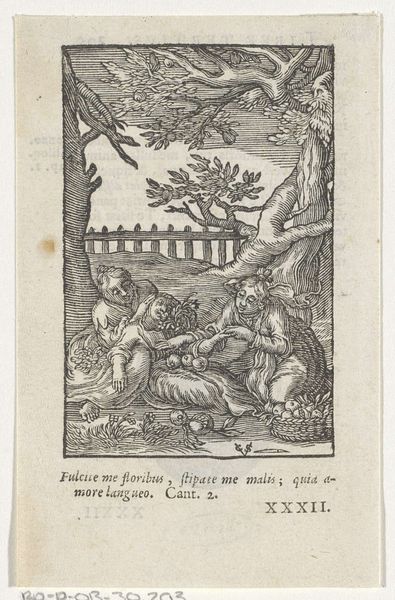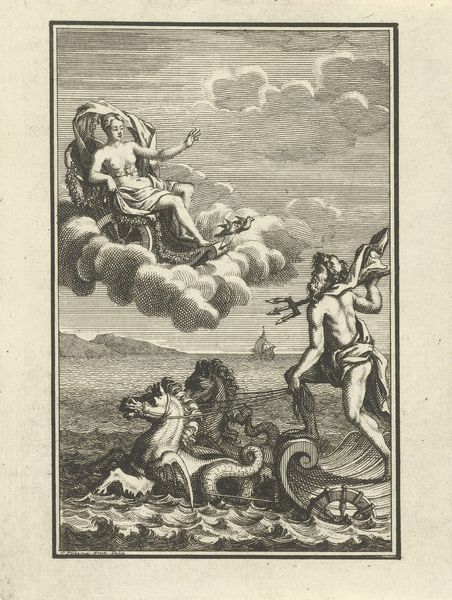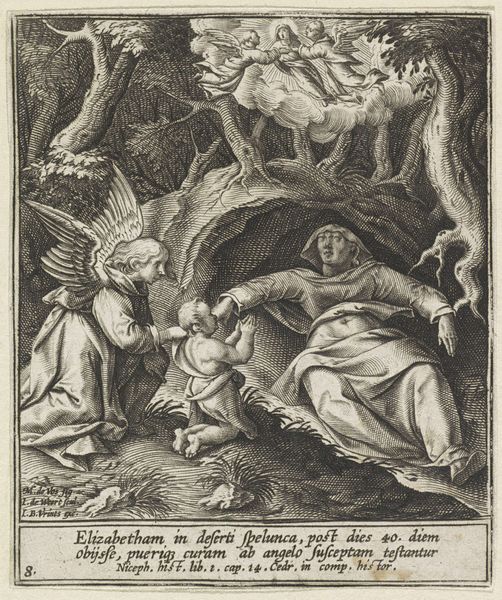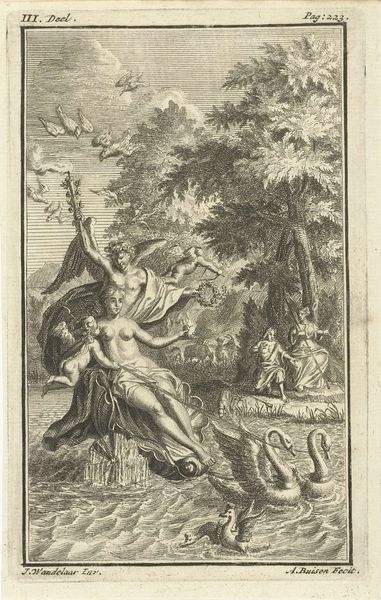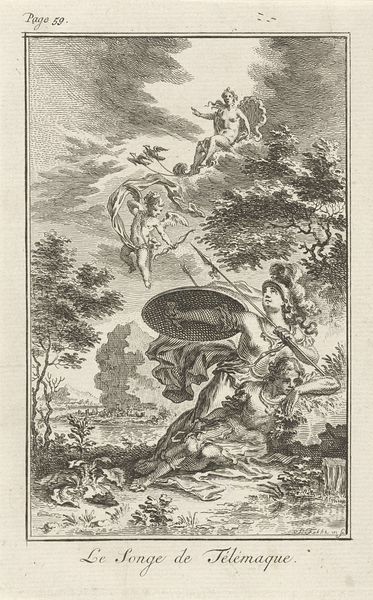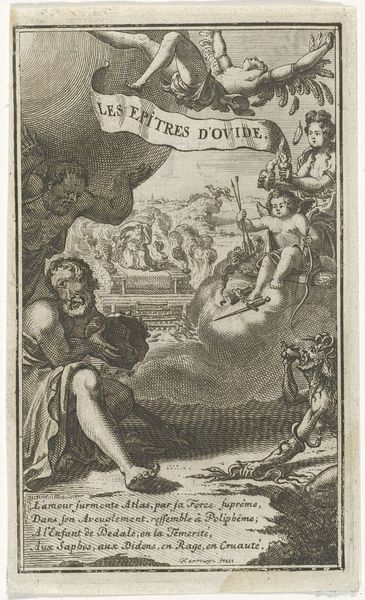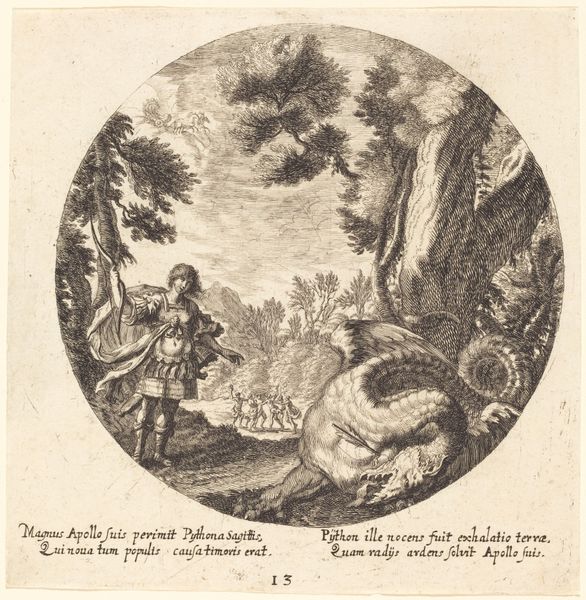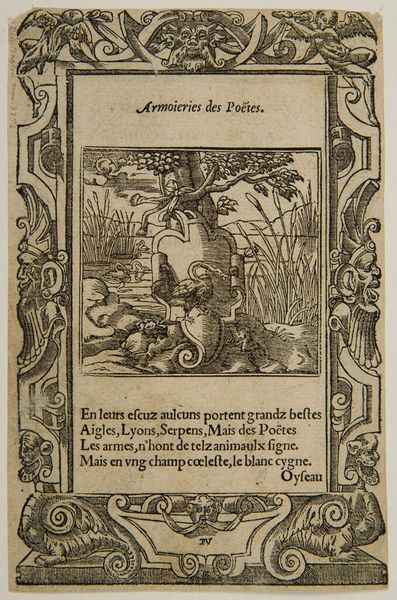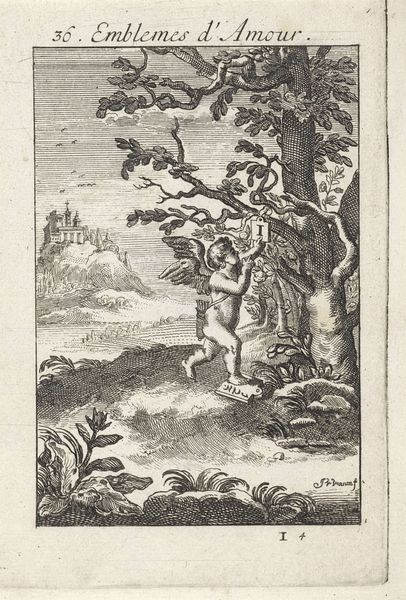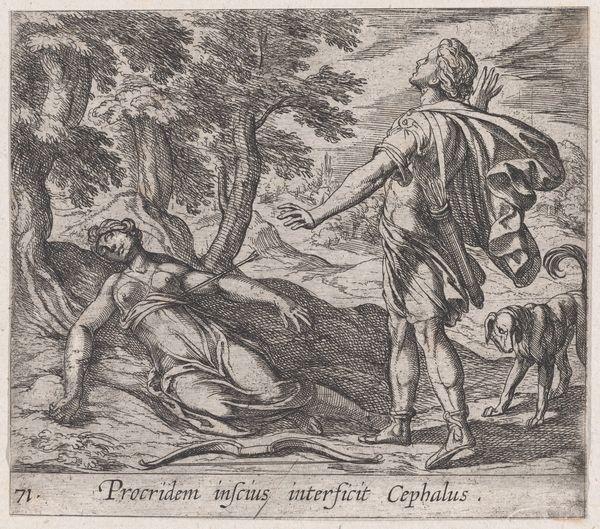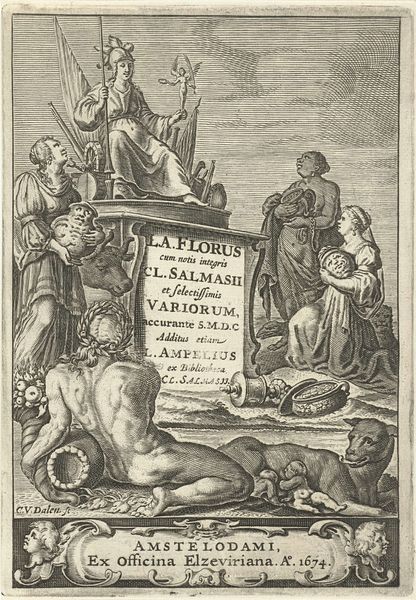
print, engraving
#
baroque
# print
#
landscape
#
figuration
#
mythology
#
history-painting
#
engraving
Dimensions: height 88 mm, width 55 mm
Copyright: Rijks Museum: Open Domain
Curator: Today we are looking at "Venus and Adonis," an engraving by Stefano della Bella, made sometime between 1620 and 1664. It’s currently part of the Rijksmuseum collection. Editor: My first impression is the overwhelming sense of grief—Venus is pictured in utter despair, clearly having just witnessed a tragic event. The scene has a theatrical, almost operatic, quality to it, despite its small scale and monochromatic palette. Curator: Absolutely. Let's consider della Bella's position within the artistic milieu of his time. The Baroque emphasis on dramatic storytelling is clear. The process of engraving itself would have required meticulous planning and skilled labor, particularly given the detail he achieves in rendering textures—the dense foliage, the smooth skin of the figures, the furry dogs... Editor: Yes, and situated within the larger narratives of mythology, we see a powerful commentary on love, loss, and the consequences of disregarding warnings. It raises questions about the societal expectations placed upon women, particularly in relation to male pursuits like hunting. Venus's powerlessness in the face of Adonis's fate becomes a poignant symbol of patriarchal structures and their impact. Also, I noticed what reads to be some of the narrative as text beneath the image. Curator: The interplay between classical subject matter and contemporary printing techniques also speaks volumes about the consumption of art. Engravings like this were reproducible, which meant this tragic scene could be distributed and consumed on a wider scale. That fact impacts our reception too—do we relate to it differently knowing it was meant for mass distribution? Editor: That accessibility also means we can contextualize this image within broader debates of art as social commentary and the dissemination of narratives. Who was its intended audience? What moral lessons might they have drawn? It's crucial to explore its impact within its historical and social fabric. Curator: Precisely. And the tangible process—the copperplate, the tools, the printing press, the distribution network—all play a role in constructing the image’s meaning, too. Editor: Thinking about that network, I wonder if della Bella intended a critique, subtle or overt, of societal structures in rendering Venus's grief. Her emotional response then transcends the personal to embody something collective. Curator: Perhaps! Ultimately, della Bella’s engraving offers a potent intersection of skill and storytelling. Editor: Indeed, a complex and multifaceted lens through which to consider both the personal and the political ramifications of mythology.
Comments
No comments
Be the first to comment and join the conversation on the ultimate creative platform.
